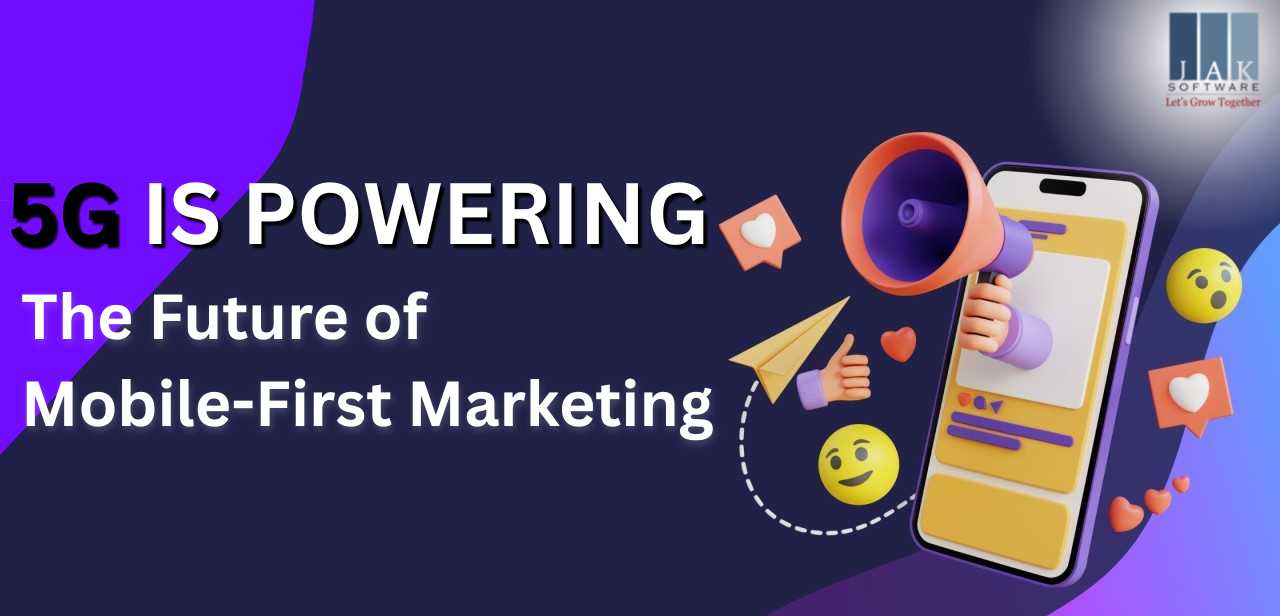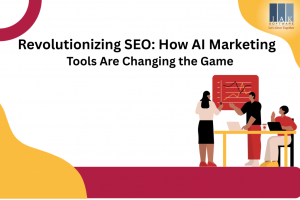The dawn of 5G technology is not just an upgrade to mobile networks—it’s a monumental shift that is transforming the way businesses approach marketing. As we move deeper into an era where mobile devices dominate communication, commerce, and entertainment, the integration of 5G into mobile-first marketing strategies is more essential than ever for brands to stay competitive. With its unprecedented speed, ultra-low latency, and virtually seamless connectivity, 5G is dramatically revolutionizing the marketing landscape. In this context, let’s explore how 5G is empowering businesses to rethink and reshape their marketing approach for the future, with a special focus on digital marketing and SEO.
1. Ultra-Fast Speeds for Immersive Experiences
Faster Load Times Enhance User Experience
One of the most thrilling aspects of 5G is its remarkable speed, which can be up to 100 times quicker than the previous 4G network. This leap allows businesses to create richer, more engaging mobile-first marketing campaigns. Marketers can now deliver high-quality content, such as HD videos, interactive ads, or live-streamed events, instantaneously, without the interruptions that plagued earlier mobile networks.
SEO Benefits: Improved Mobile Page Speed
From an SEO perspective, this increased speed significantly benefits businesses that focus on content-heavy strategies. Specifically, 5G enables mobile websites to load at greater speeds, thereby providing users with a seamless experience and dramatically reducing wait times to a minimum. Since site speed is a significant ranking factor for search engines, brands can see improved organic traffic and better search engine rankings as a result of optimizing their mobile websites for 5G’s capabilities.
2. Data-Driven Personalization at Scale
Real-Time Insights to Improve Targeting
The incredible data processing capabilities of 5G also allow brands to gather and analyze large amounts of real-time data from mobile users. This data can be leveraged to create highly personalized marketing campaigns, enhancing the relevance of content and offers to individual consumers.
SEO Strategies: Hyper-Targeting with Location-Based Ads
For digital marketers, 5G opens up new possibilities for location-based marketing and hyper-targeted SEO strategies. Brands can send personalized promotions to consumers based on their real-time location or behavior. For example, a coffee shop could send a discount offer to a customer who is nearby, or an e-commerce brand could suggest products based on a user’s past browsing habits. By using advanced data analytics in tandem with SEO techniques like local search optimization, brands can ensure their messages are reaching the right audience at the right time.
3. Low Latency for Real-Time, Interactive Marketing
Seamless Interactions with Augmented Reality and VR
This makes 5G an ideal environment for mobile-first marketing strategies that involve real-time interactions, such as augmented reality (AR) filters, live chats, or virtual try-ons.
SEO Impact: Engagement Drives Ranking
For SEO and digital marketing strategies, the low-latency feature provides the ability to deliver highly responsive content on mobile devices. For instance, interactive AR experiences or live-streamed video events can now run seamlessly on mobile platforms, offering consumers immediate and immersive brand experiences. These types of interactions not only drive engagement but also help increase dwell time and user interaction, both of which positively influence SEO rankings.
4. Boosting Mobile Shopping Experiences
Frictionless Transactions and Faster Checkouts
5G technology is expected to fuel considerable expansion within the m-commerce sector. Faster internet speeds and lower latency mean consumers can shop online with little to no friction. Pages load faster, product images and videos display in high definition, and mobile checkout processes are smoother—all of which improve the overall user experience.
SEO and Mobile Optimization: A Must for the 5G Era
In terms of digital marketing and SEO, this shift towards mobile-first shopping underscores the importance of mobile optimization. With the rise of 5G, search engines are likely to continue prioritizing mobile-friendly websites, making it crucial for brands to optimize their mobile pages for speed and usability. Offering seamless mobile shopping experiences will not only improve customer satisfaction but also increase the chances of ranking higher in mobile search results.
5. Enhanced Mobile Advertising and Programmatic Marketing
Immersive Ads with Faster Delivery
5G’s faster speeds and higher bandwidth also provide marketers with new opportunities for mobile advertising. With 5G, brands can provide rich, engaging media, from video advertisements to interactive content, directly to mobile users in real-time, without any lag.
SEO Impact: Real-Time Data for Ad Optimization
The digital advertising space will benefit greatly from 5G, especially when combined with programmatic advertising. The combination of real-time data processing and ultra-fast connectivity means that programmatic ads can be served with incredible precision and efficiency. By analyzing consumer data on the fly, digital marketers can target the right audience with the right message, driving more effective campaigns that lead to higher ROI. Additionally, brands offering ORM services (Online Reputation Management) can leverage 5G’s speed and real-time capabilities to monitor, manage, and respond to consumer feedback more efficiently, strengthening their online presence and customer trust.
SEO and Paid Search Integration
In the SEO landscape, these advanced advertising capabilities allow brands to test and refine their ad strategies in real time. Marketers can track key metrics such as impressions, click-through rates, and conversions, adjusting their campaigns to optimize performance for both paid and organic search results.
6. The Expansion of Smart Cities and Marketing Driven by IoT Innovations
Marketing through IoT Devices in Real-Time
With 5G’s ability to connect countless devices, the development of smart cities and the expansion of the Internet of Things (IoT) are guaranteed to accelerate. This interconnectedness opens new avenues for digital marketing, as brands can engage with consumers in real time across a wide array of devices and platforms.
SEO for Voice Search and IoT Optimization
In these smart environments, marketers can target consumers through IoT devices, such as smart wearables, connected cars, or smart billboards. For example, as consumers move through a city, they may receive personalized ads or offers based on their behavior, location, and preferences. For SEO, this interconnected world means brands must consider voice search optimization and mobile search in new contexts. With the increasing use of voice-activated devices, optimizing your content for voice search will be crucial for maintaining visibility in a 5 G-enabled environment.
7. Optimizing for 5G: A Digital Marketing and SEO Priority
Adapting Your Strategy for a 5G World
As 5G technology continues to evolve, digital marketers need to consider how this connectivity impacts their marketing strategies, especially when it comes to SEO. Optimizing for mobile-first indexing, ensuring fast loading times, and creating seamless user experiences will be crucial for businesses looking to capitalize on the benefits of 5G.
SEO and Content Adaptation: Focusing on Mobile Optimization
The integration of 5G will also push brands to explore new forms of digital marketing, such as interactive AR and VR, live streaming, and real-time personalized offers. These techniques will help marketers stay ahead of the competition by creating memorable experiences that not only engage users but also improve their search engine ranking.
Conclusion
5G is revolutionizing mobile-first marketing by enabling faster, more responsive, and highly personalized consumer experiences. Thanks to its speed, low latency, and enhanced connectivity, 5G is transforming the way businesses interact with their audiences, from immersive shopping experiences to real-time, data-driven advertising campaigns. Therefore, for digital marketers and SEO professionals, staying ahead of the 5G curve will require optimizing for mobile, leveraging real-time data, and creating content that can meet the demands of this new, fast-paced digital landscape. Moreover, the future of marketing is undeniably mobile-first, and 5G is powering this shift with new possibilities that will drive engagement, boost sales, and strengthen brand loyalty.




